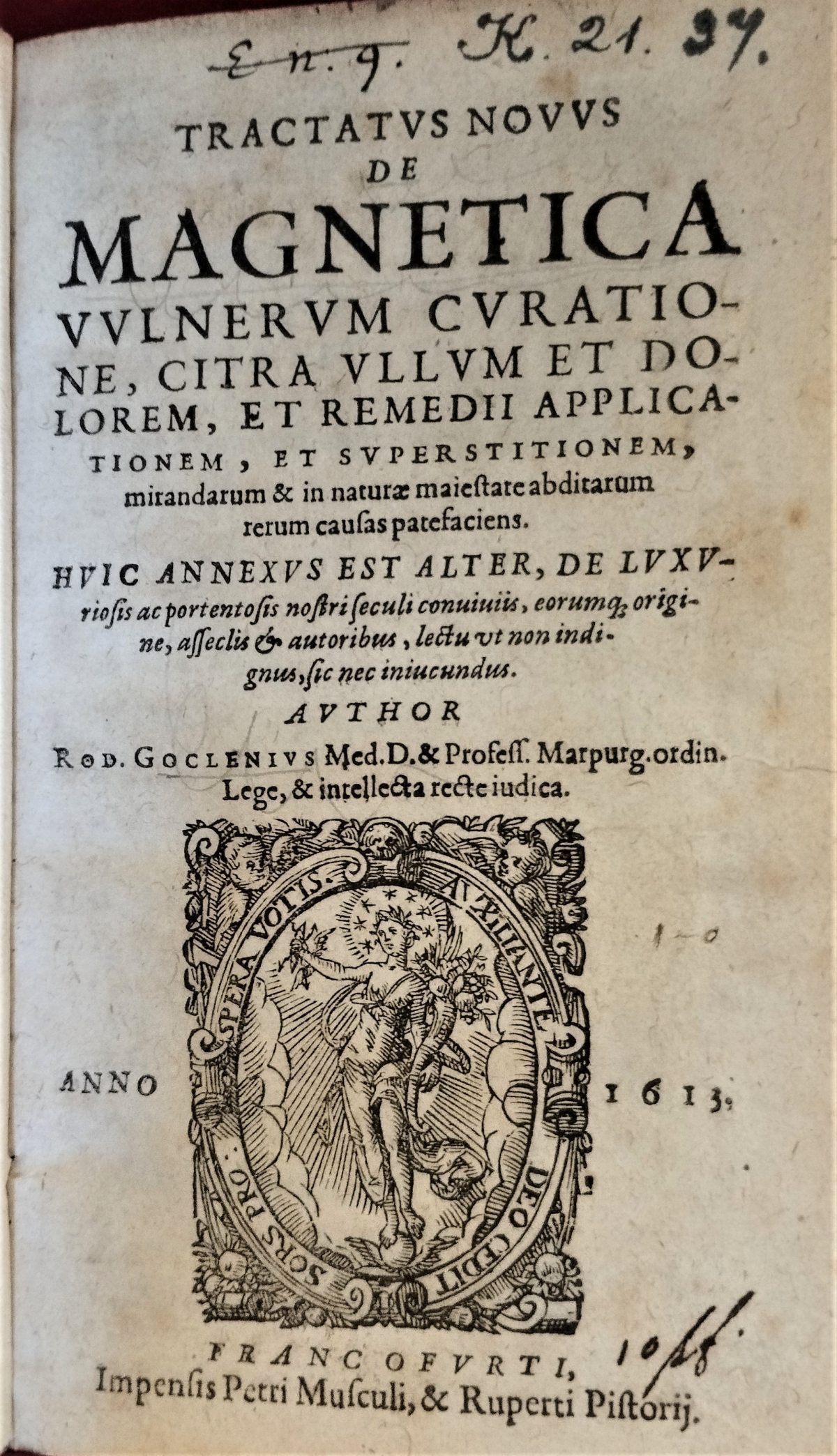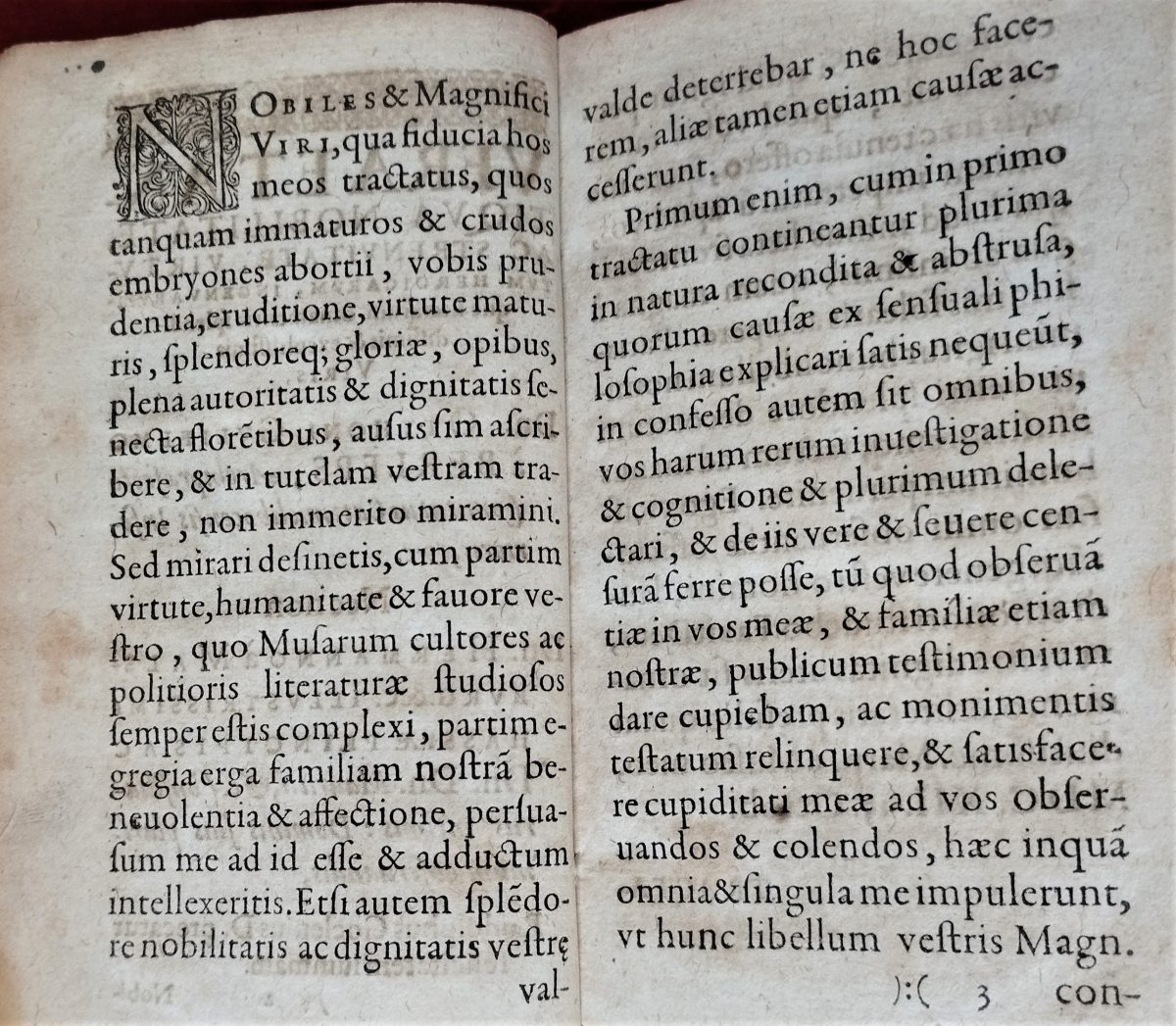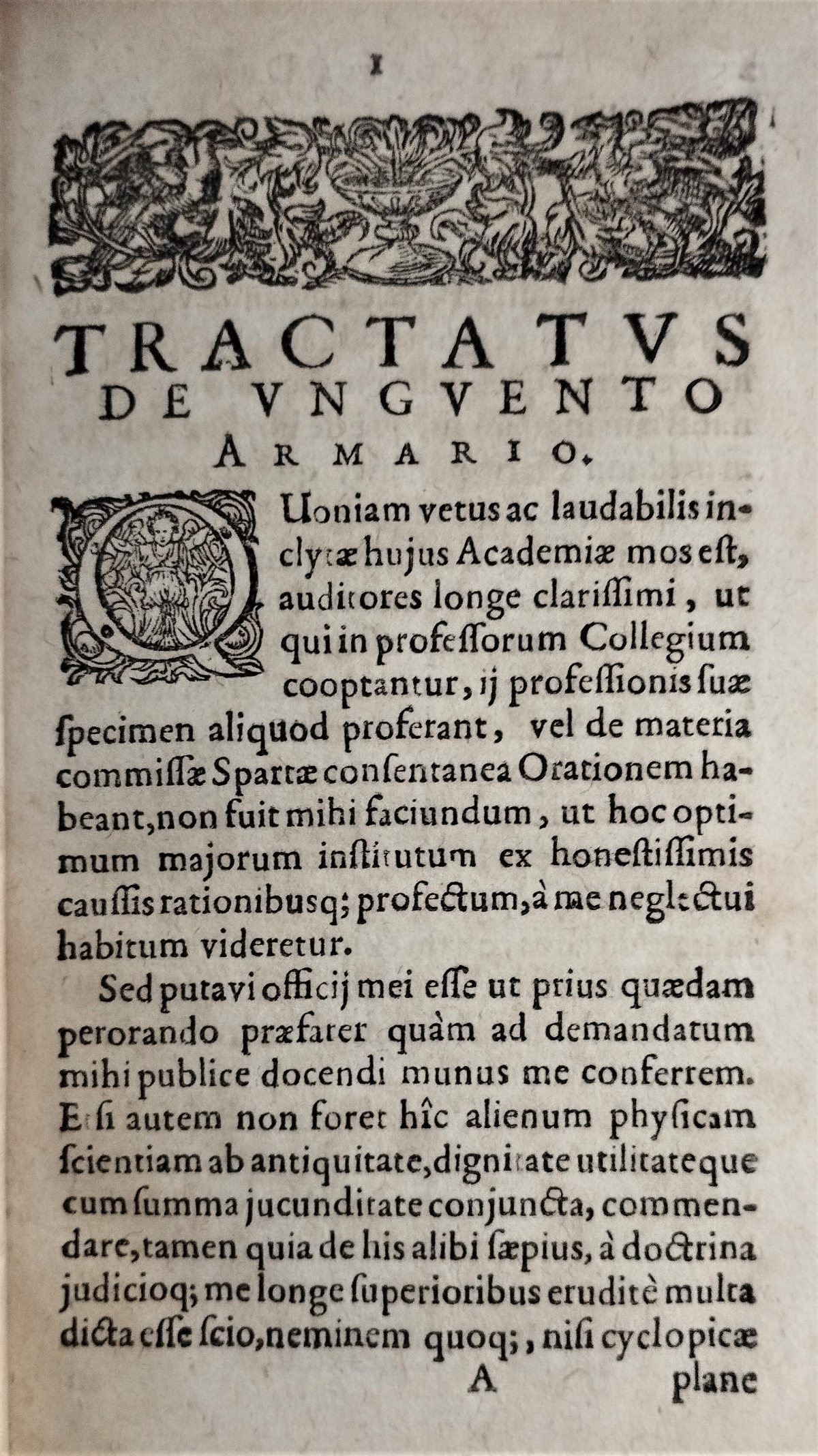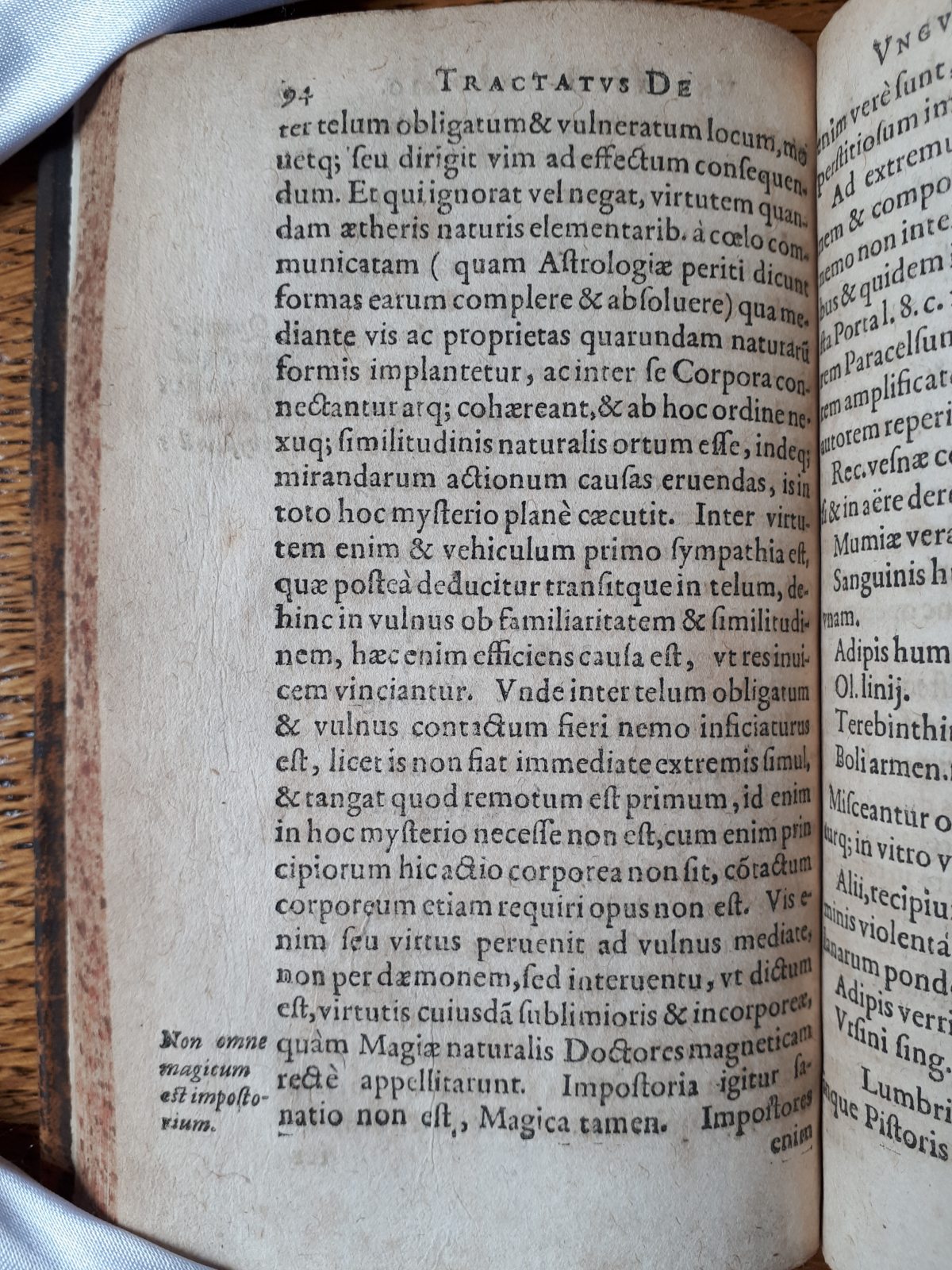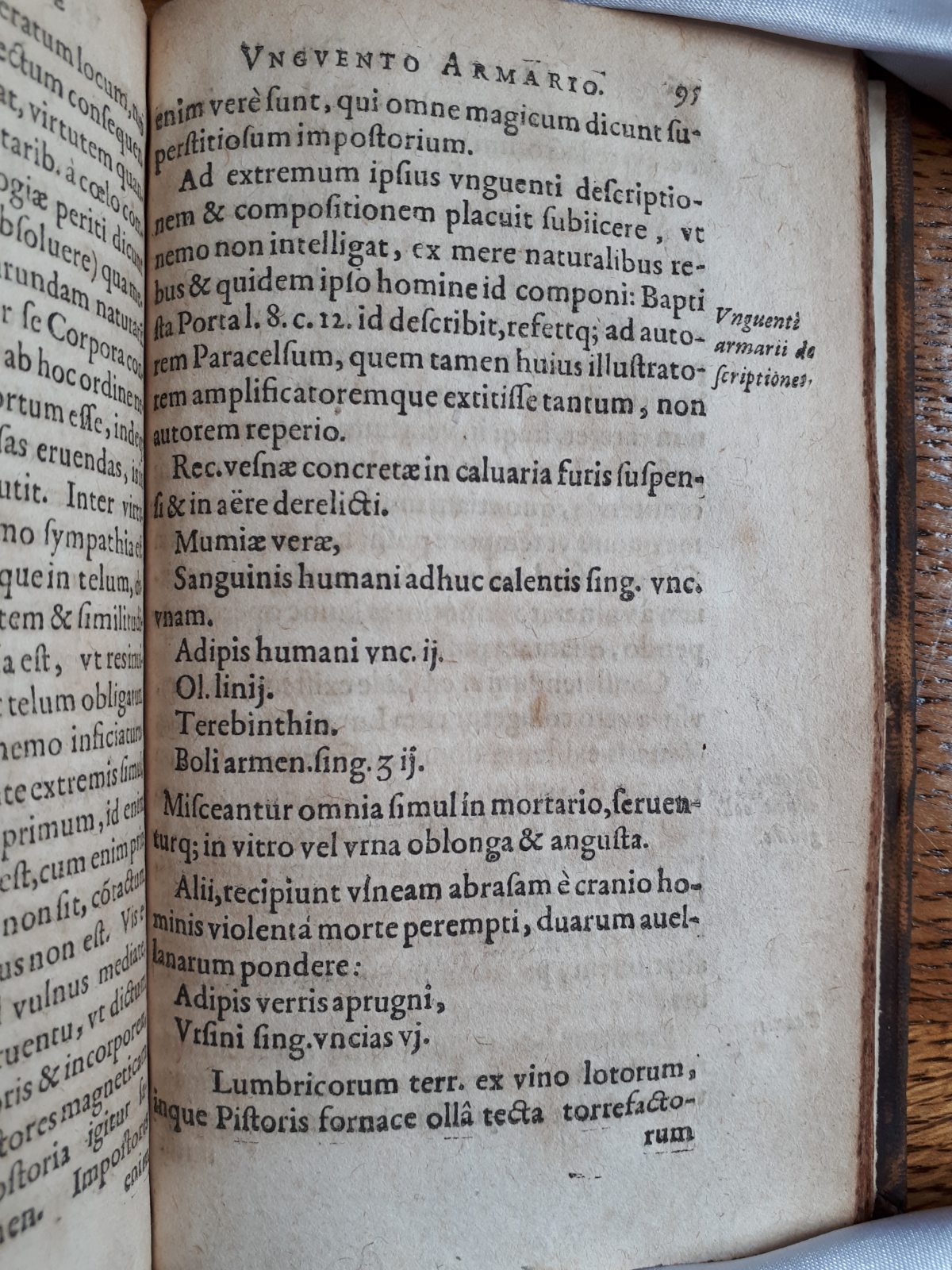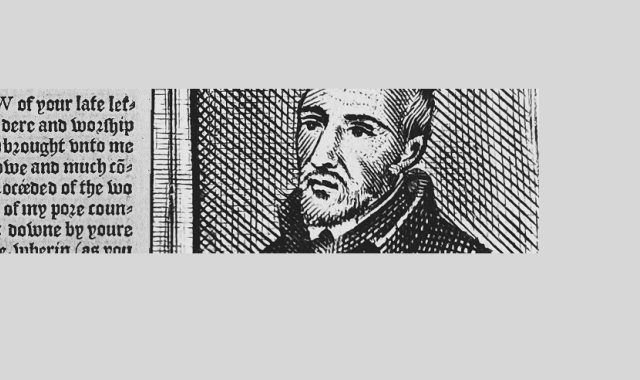Powers of sympathy
Tractatus novus de magnetica vulnerum curatione (A new treatise on the magnetic cure of wounds), by Rudolph Goclenius the Younger. Printed in Frankfurt by Petrus Musculus and Ruprecht Pistorius, 1613. Lower Library, K.21.37
The doctrine of the ‘weapon salve’ developed among the followers of the Swiss physician Paracelsus. It held that a wound could be cured by applying a special preparation, not to the wound, but to the weapon that caused it.1 Rudolph Goclenius (1572–1621) first recommended the remedy in print in 1608 – the text was his inaugural lecture as a professor at Marburg2 – and expanded his argument in the Tractatus novus.
Like other early writers on the salve, Goclenius favours standard Paracelsian ingredients such as mummy (mumia), moss from a hanged man’s skull (usnea), and ‘still warm’ human blood. He argues that wound and weapon are linked at a distance by ‘spiritual substances, which [permeate] all creation’,3 and support powers of sympathy and antipathy. He calls the salve’s action magnetic, since he takes ferromagnetism (as well as heliotropism) to work on the same basis; he is equally willing to call it magic.
The Protestant Goclenius’s book was attacked by the Jesuit theologian Jean Roberti; both writers’ books were attacked by the chemist Jan Baptist Van Helmont (also a Catholic, who supported the salve); and soon a ‘full-blown controversy’ was under way, ‘involving dozens of treatises and participants throughout Europe’,4 in the course of which Van Helmont was prosecuted without conclusion by the Inquisition.5
Natural and mythical histories << Powers of sympathy >> The first monograph
- Carlos Ziller Camenietzki, ‘Jesuits and Alchemy in the Early Seventeenth Century: Father Johannes Roberti and the Weapon-Salve Controversy’, Ambix 48, no. 2 (2001): 83–87.
- John Ferguson, Bibliotheca chemica (Glasgow: James Maclehose and Sons, 1906), 1:333.
- Paraphrase by Camenietzki, ‘Jesuits and Alchemy’, 88.
- Christoph Sander, ‘Magnetism for Librarians: Leone Allacci’s De magnete (1625) and Its Relation to Giulio Cesare LaGalla’s Disputatio de sympathia et antipathia (1623)’, Erudition and the Republic of Letters 5 (2020): 298.
- Robert Halleux, ‘Le procès d'inquisition du chimiste Jean-Baptiste Van Helmont (1578–1644): les enjeux et les arguments’, Comptes rendus des séances de l'Académie des Inscriptions et Belles-Lettres (2004): 1073–1076.


